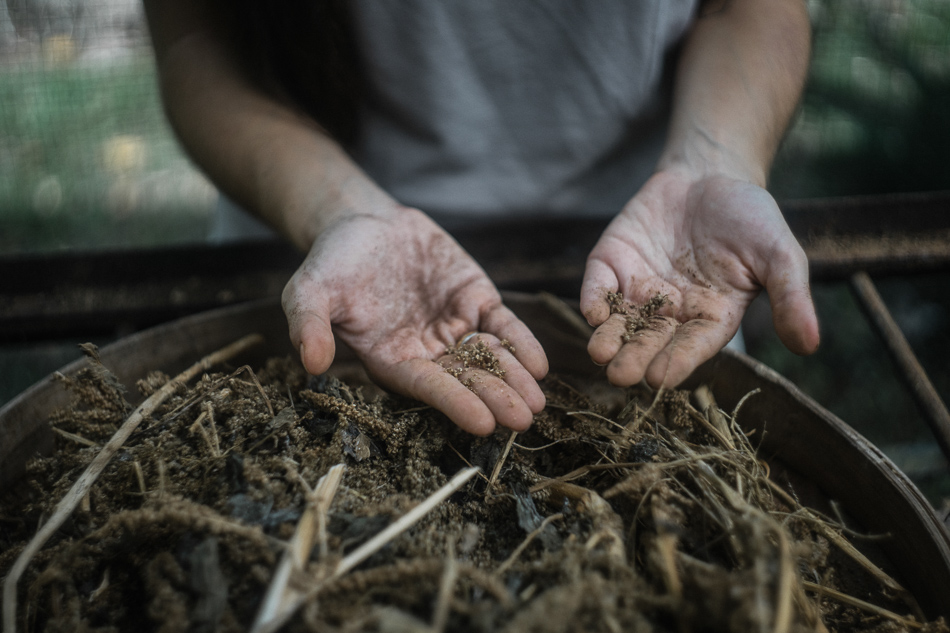At Green School every primary school class has their own vegetable garden where students have the opportunity to interact with their food, by planting seeds, growing, harvesting and cooking (sometimes even selling their harvest at the school’s Farmers’ Market).
Do you dream of having your own vegetable garden and growing food for yourself and your family? Having a healthy harvest, for homegrown, homemade meals is a great start to living more connected to nature and supporting a healthier future for our communities and food system.
At The Kul Kul Farm, we are passionate about growing food and teaching others to do the same. Getting started can be a little daunting but if you start small and follow these simple guidelines you’ll be well on your way to harvesting your first meal before you know it!
 Here is our list of things you need to know to set you up for success in the garden!
Here is our list of things you need to know to set you up for success in the garden!
1. Feed your plants. Sunshine!
Vegetables need sun to grow. They thrive in at least 6 hours of direct sunlight. If you’re planting sweet fruits you might need a little more to turn sunlight into sugar to grow big and juicy.
2. Feed your soil
Your soil is alive, it’s not just dirt, it’s full of micro-organisms and insects and they need to eat. Most of them eat decomposed organic matter, and what they excrete is what feeds our plants! Make sure you add lots of quality compost to all your beds, at least twice a year. Cover your beds with a layer of dry organic matter (mulch) before you plant to protect your soil from intensive rain, and sun.
3. Know your plants
Start with finding out what grows in your area, and what seeds are available. Try and find organic, open-pollinated seeds, so that you can save some seed for next time. Keep your eye out for seed packages that say F1 Hybrid on them, they might be a good, juicy variety but you won’t be able to save any seeds. Remember, growing food and working in the garden is time consuming, don’t bite off more than you can chew, start small, with a few varieties and build from there.
4. Give your seeds a chance
You will be able to plant many seeds directly in your garden beds, but others need a little extra help to get going. Grow these seeds under a transparent roof, or on a balcony. Keep them away from heavy rains, extreme temperatures, and pests.
5. Use good tools
Some tools we love include the digging fork for loosening your soil, a shovel for applying compost, a trowel for planting, a good rake for distributing compost over your garden bed, a hose & hose-head for watering, a good knife for harvesting and a wheelbarrow so that it is easy to apply compost and harvest.
6. Water
Every plant has different watering needs but most plants like free draining soil that is moist. Make sure you water your beds in the early morning or evening with a hose head or a sprinkler to get an even distribution of moisture. Consider planting water loving plants like cucumbers with the rains, and vegetables like tomatoes and kale in the dry months.
Gardening is a lifelong journey and the more time you spend with plants, the more they will teach you. Each plant holds an array of gifts, from food, to medicine, attracting pollinators, soil restoration, habitat for wildlife and a place to commune with friends and family. As Permaculture Designer & Educator Geoff Lawton says: “All the world’s problems can be solved in a garden.”
If you’d like to know more about designing and setting up your own permaculture property, homestead, or home garden, bookings are now open for our Permaculture Design Course coming up this June 22 – July 7 at The Kul Kul Farm facilitated by Nick Ritar from Milkwood Permaculture.
Article Written by Maria & Orin Hardy at The Kul Kul Farm.



